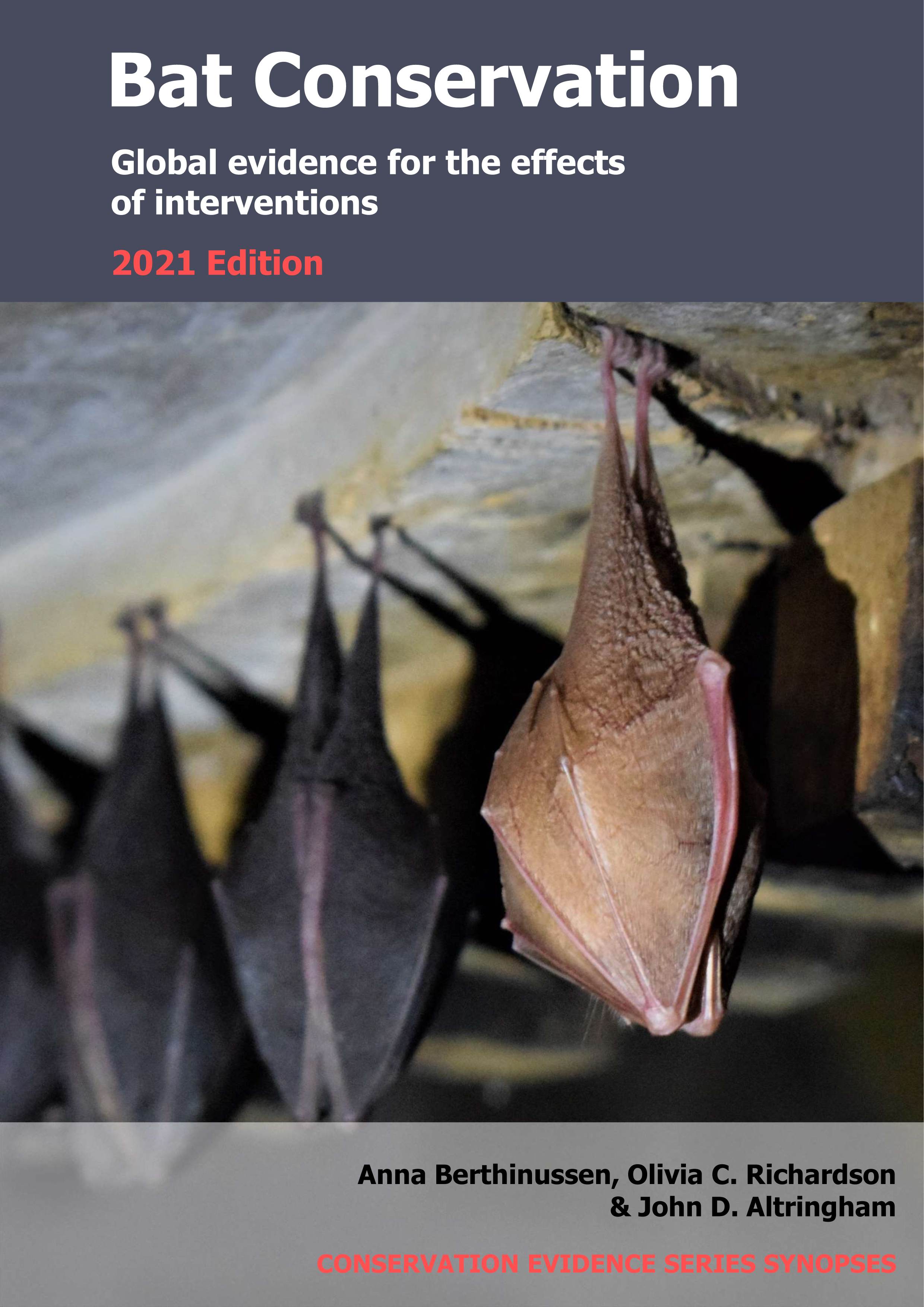Restore or create forest or woodland
-
Overall effectiveness category Unknown effectiveness (limited evidence)
-
Number of studies: 2
View assessment score
Hide assessment score
How is the evidence assessed?
-
Effectiveness
40% -
Certainty
15% -
Harms
0%
Study locations
Supporting evidence from individual studies
A site comparison study in 2007–2008 in two native forest fragments in southern Brazil (Gallo et al 2010) found that a reforested area had lower bat diversity than a protected native forest fragment. In the reforested area, 105 bats of six species were captured, and in the protected forest fragment, 397 bats of 14 species were captured (diversity data reported as diversity indices). No comparisons were made before and after restoration, or with unrestored areas. Both forests consisted of native tree species. The protected forest fragment (108 ha) had been selectively logged 20 years previously. The reforested area (12 ha) had previously been cleared for agriculture and cattle grazing, and had been planted with native tree species in 2002. At each of two sites, bats were captured in eight mist nets at ground level for 6 h from sunset on two consecutive nights. Each site was surveyed four times in spring, summer, autumn, and winter in 2007 or 2008.
Study and other actions testedA replicated, controlled, site comparison study in 2010–2012 of 64 restored forest sites in southwestern Australia (Burgar et al 2017) found that restored forests had higher or similar bat activity as natural forests for five of seven bat species, and activity varied with the age of restored forest. Four bat species had similar or higher activity in young restored forest (<5 years old; average 0.3–8.3 bat passes/night) and natural unmined forest (average 0.3–15.5 bat passes/night), but lower activity in older restored forest (>10 years old; average 0.1–6.3 bat passes/night). One bat species had similar activity in older restored forest (>15 years old; average 0.6–1.1 bat passes/night) and unmined forest (average 0.9–2.5 bat passes/night), but lower activity in young restored forest (<5 years old; average 0.2–0.3 bat passes/night). Two bat species had consistently lower bat activity in all ages of restored forest (0.2–51 bat passes/night) than in unmined forest (3–68 bat passes/night). See original paper for more detailed results. All 64 sites were northern jarrah Eucalyptus marginata forest fragments. Restored sites had previously been cleared and mined. Surveys were carried out at 8–16 sites in restored forest of four different ages (0–4, 5–9, 9–14 and >15 years since restoration) and in eight natural unmined forest sites. All restored sites were >4 ha in size with at least one edge bordered by unmined forest. A bat detector was deployed for four full nights at each of 64 sites between October and March in 2010/2011 and 2011/2012.
Study and other actions tested
Where has this evidence come from?
List of journals searched by synopsis
All the journals searched for all synopses
This Action forms part of the Action Synopsis:
Bat Conservation
Bat Conservation - Published 2021
Update 2020





)_2023.JPG)














